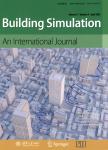The impact of cultural assumptions on simulated energy, comfort, and investment returns of design decisions in two desert climates
作者机构:Harvard Graduate School of Design48 Quincy St.CambridgeMAUSA Universidad de MonterreyAv.Ignacio Morones Prieto 4500San Pedro Garza GarcíaNLMexico
出 版 物:《Building Simulation》 (建筑模拟(英文))
年 卷 期:2021年第14卷第4期
页 面:931-944页
核心收录:
学科分类:08[工学] 0807[工学-动力工程及工程热物理] 081304[工学-建筑技术科学] 0813[工学-建筑学]
基 金:funded by the Harvard Climate Change Solutions Fund
主 题:performance simulation energy model low-cost housing housing policy thermal comfort culture
摘 要:In Latin America, default assumptions and borrowed templates and methodologies are often used in energy modeling, resulting in models that might not represent their cultural context and leading to policies awkwardly fit to local practices. Policy-driving low-income housing studies in Mexico, for example, activated both heating and cooling in energy models even though less than 5% of the homes in the country have heating systems. This paper illustrates the importance of modeling local sociocultural habits and practices, and how this can affect design outcomes. Here, we modeled low-income housing representative of typical residences in two desert climates-Hermosillo, Mexico, and Copiapo, Chile-using EnergyPlus. Settings representing local practices in each region were tested against default values, including occupancy settings, regional construction systems, and importantly, HVAC settings related to partial conditioning. Their impacts were measured via variation in energy use, comfort conditions, and the payback period of design upgrades. Results demonstrated how certain assumptions can have a high “design significance, a term we propose for inputs that completely change optimal design decisions, as well as the importance of considering thermal comfort in such decisions. Including partial conditioning, for example, resulted in at least double the payback period and discomfort degrees for design upgrades in 16 of 24 instances.



